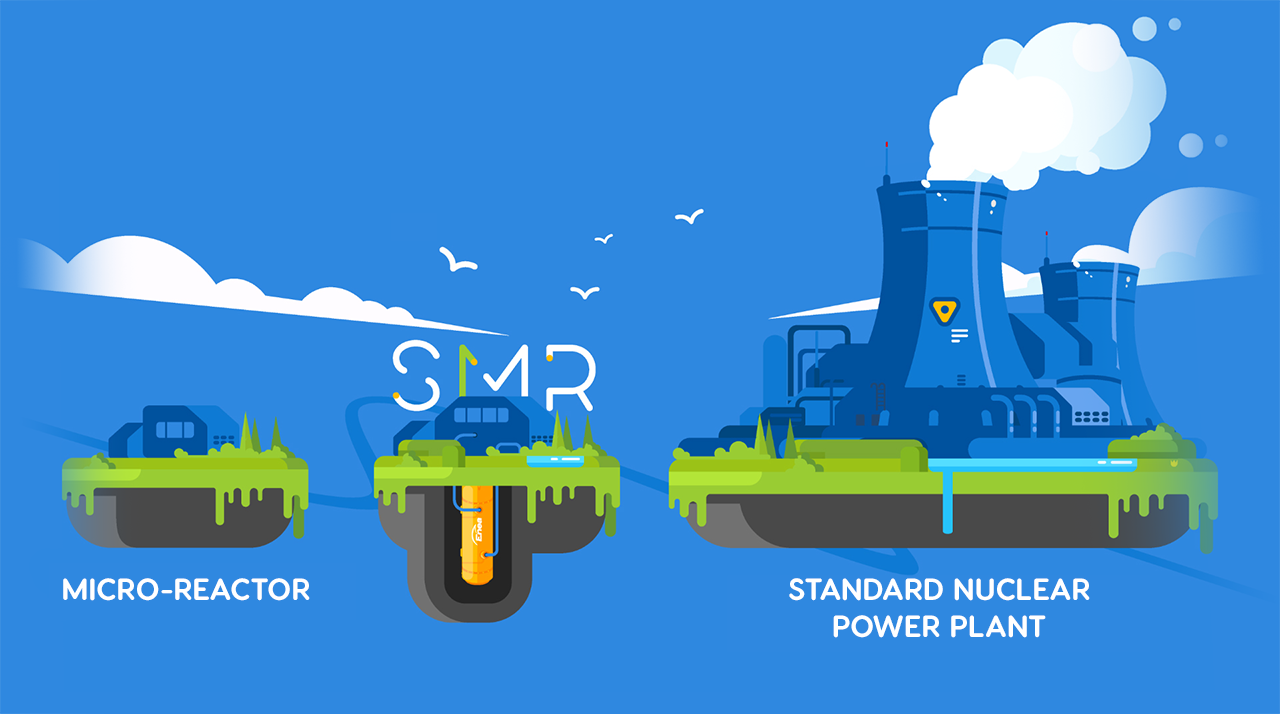Enea Group for #SMR growth. #EneaTransformation is moving ahead!
Explore the potential of small modular reactors
Find out more:

What is SMR?
SMR is an acronym for Small Modular Reactor.
It is defined by the International Atomic Energy Agency (IAEA) as a nuclear reactor with a power capacity of up to 300 MWe, designed using modular technology, i.e., mass-produced modules delivered in whole to the final operation site.

MW(e)? What does it mean?
This symbol represents the watt, i.e., a unit of power in the SI system or, more specifically, a multiple of this unit: one megawatt of power equals one million watts. In electrical engineering, thermal capacity is differentiated from electrical capacity – the former is expressed in MW(t), and the latter in MW(e). Capacities up to 300 MW(e) mean that the generation capacity of the reactor can reach an equivalent of 150 thousand electric kettles with a power rating of 2000 W each.

Does the modular design of SMRs mean that such a small nuclear power plant can be expanded even while it is still in operation?
Yes. That is the idea, to enable adding further power units when and where necessary and expand the plants, just like LEGO blocks.

So what is the maximum capacity of such a small nuclear power plant?
The definition of IAEA specifies the maximum capacity as 300 MW(e), but there are technology providers that propose a generation capacity of approx. 500 MW(e) or several smaller modules in a “multi-pack”, e.g.: 6 modules x 77 MW(e) or 12 modules x 77 MW(e), which givesadds up to 924 MW(e) in total. Plants with capacities over 1000 MW(e) are classified as large nuclear power plants.

Small plant, large plant… What’s the difference?
A bigsignificant one. A small reactor can supply power for a small town; a bigger reactor can supply a large urban agglomeration or a large energy-intensive production plant (e.g., a steel mill or glassworks).

Interesting. Does this mean that people from the town will be able to find employment at such a small nuclear power plants?
Not just people from the town but from the entire region. The construction of such a small power plant requires approximately 1,000 workers, and approximately 200 people will be needed to operate it.

But is working at an SMR plant safe?
Of course, because the plant conforms to very stringent safety standards. There is even a “culture of safety”. It is an entire area of knowledge dedicated to compliance with the regulations and the 3S’s: Safety, Security and Safeguards, i.e., protection against accidents, intentional actions and misuse of radioactive materials.

And who follows these rules and ensures they are enforced?
The rules are followed by all personnel of the power plants, including those involved in the construction of the plant and in the supply chain. All of this is supervised by the President of the National Atomic Energy Agency (PAA).

Is this whole technology safe for us and the environment?
The nuclear technology is safe for the environment as well as your future. SMRs are a zero-emission technology, which means that they do not generate CO2, particulates or other substances that could be emitted into the atmosphere. They are fully safe both for people and nature.

Workshops for schools affiliated with the Enea Group
The first group to be introduced to the world of modern nuclear technologies will include students of the technical and vocational schools that have been affiliated with the Enea Group for many years to support the education of young electrical engineers. The meetings are designed to educate and inform the students and will be hosted by an expert who will share his knowledge of SMR technology and its functions and answer the students’ questions. The participants will also have an opportunity to test their knowledge in a mini quiz with prizes during the lesson.

Contact
Are you a potential project owner? Interested in being our partner? Contact the Department for the Development of Innovative Projects and New Technologies of the Enea Group:

